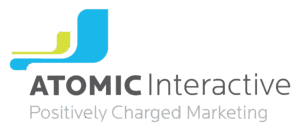
HTML5 and CSS3 are the new web development tools on the scene, and they’re making life easier and more exciting for development geeks around the world.
Earlier versions of HTML and CSS have been around for years. HTML, of course, is the language that browsers use to display web pages. And CSS is a tool that developers use to control what web pages look like, and to ensure that any changes they make to a web page “cascade” through the site consistently.
HTML5 and CSS3, the new version of these tools, don’t actually help developers do anything radically different – you still can’t click on a candy bar and have one materialize on your desk. (Maybe soon ???) The true power of HTML5 and CSS3 is that they help developers do some of the same things they always have – but much more easily and quickly.
For example:
- HTML5 lets you add increased functionality to a site – like audio and video, or drag-and-drop features – directly in your HTML5 code. Previously, you had to add a third-party plug-in to your HTML to do the same thing.
- In the same way, CSS3 makes it easier to display certain design elements on your site – such as rounded corners, rotating elements, drop shadows, or special fonts. Previously, you would have needed multiple lines of code to execute such features, or a Flash or JavaScript plug-in.
Creating these elements using HTML5 and CSS3 can make life better for everybody – the designer, the client, and the end user. The designer benefits because shorter, simpler coding makes for faster, and frankly, more enjoyable development. The client benefits because the more efficiently we can work, the more cost-effective development and ongoing maintenance are. And the end user benefits because sites that don’t rely on endless plug-ins load more quickly.
Now, truth be told, not all browsers are ready to support HTML5. Mobile devices are leading the pack – in fact, we’ve been developing iPhone and iPad apps and sites right and left using the new language. Chrome and Safari are on the way to supporting it fully … Firefox is getting there … and IE is not even close. So, depending on what browser most of your audience is using, folks could have difficulty viewing sites developed in HTML5.
But soon enough, everyone will catch up. In the meantime, designers and front-end developers are going to be enjoying our new toys … experimenting with creating new websites that are more interactive and dynamic than ever before.









